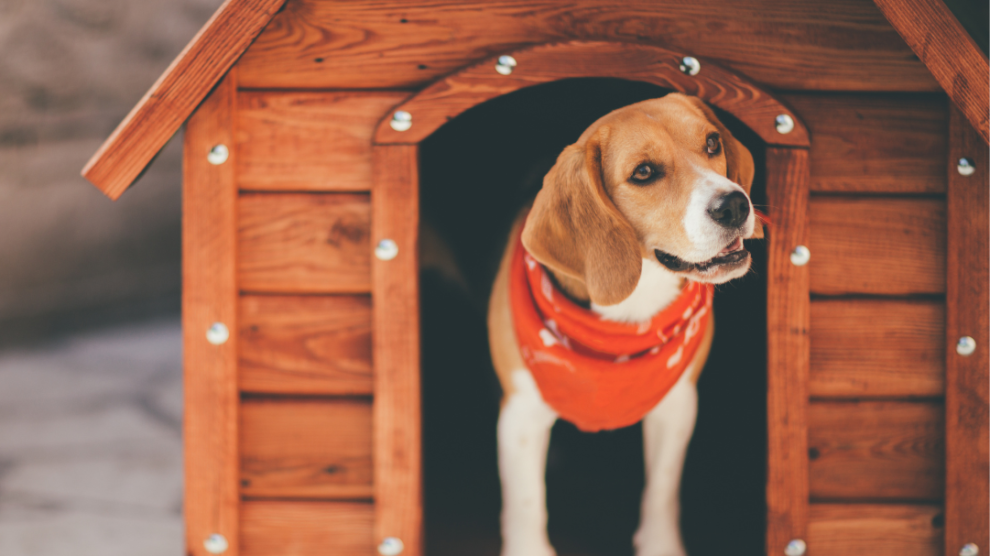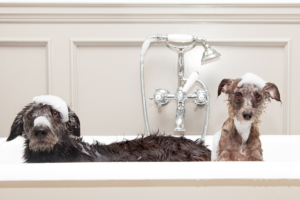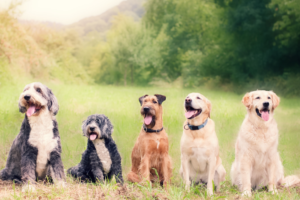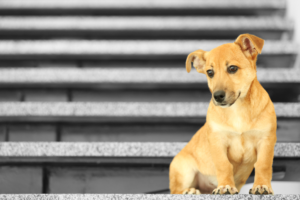A Guide to Creating the Perfect Dog House
A dog house is more than just a shelter; it’s a place where your dog can feel safe, comfortable, and secure. Whether you have a small lap dog or a large breed, understanding the features your dog will enjoy in a house is crucial to creating a space that meets their physical and emotional needs. In this article, we’ll explore the top features that dogs love in a dog house, helping you choose or design a shelter that ensures your furry friend’s comfort and happiness.
Size and Space
One of the most important factors in selecting the right dog house is size. Just like humans, dogs need enough space to move around comfortably. A dog house that’s too small can feel cramped and uncomfortable, while one that’s too large may fail to provide the cozy, secure feeling dogs seek in their den.
What Size Should the Dog House Be?
The ideal size of a dog house should allow your dog to:
- Stand up: Your dog should be able to stand tall without hitting their head on the roof.
- Turn around: There should be enough room for your dog to easily turn around.
- Lie down comfortably: Your dog should have enough space to stretch out and curl up in their natural sleeping position.
As a general rule, choose a dog house that is about 25% larger than your dog’s length and height. For example, if your dog is 20 inches tall and 30 inches long, look for a house that offers at least 30 inches of height and 45 inches in length.
Dog House Insulation and Weather Protection
Dogs, like people, have preferences for temperature. Some breeds are more sensitive to extreme heat or cold, and if your dog is going to spend a lot of time in their house, it’s essential to ensure it provides proper insulation.
Why Does Insulation Matter?
- Warmth in Cold Weather: If you live in a colder climate, an insulated dog house can help keep your dog warm during winter months. Insulation helps regulate the temperature, making the space cozier and protecting your dog from harsh winds or freezing temperatures.
- Coolness in Hot Weather: In hot climates, insulation can also work to keep the house cooler by reducing heat transfer from the outside. Consider adding shade or a ventilation system to prevent overheating.
Many modern dog houses come with built-in insulation or include materials such as foam or cedar to keep the inside temperature stable. A house with a roof overhang can also help keep the sun out and protect your pet from the elements.
Dog House Ventilation
Adequate ventilation is another critical feature for a dog house, especially if your dog spends time in it during warm weather. Without proper airflow, a house can become stuffy and uncomfortable.
How to Ensure Good Ventilation
Look for a dog house with strategically placed air vents or windows. These allow air to flow through the house, keeping it cool and breathable. Just be sure that the ventilation doesn’t allow rain or snow to get inside, as moisture can lead to discomfort and even health issues.
Additionally, some dog houses come with raised floors to keep the interior dry and free from moisture that could collect on the ground.
Durability and Safety Features
Dogs love to explore, chew, and sometimes get a little rough. A durable dog house that can withstand these activities is crucial for ensuring it lasts. Moreover, your dog’s safety is a top priority, so the materials used should be pet-friendly and sturdy.
Durable Materials
- Wood: Natural wood provides a solid, sturdy structure that dogs often enjoy. Look for treated wood that resists rot, mildew, and pests.
- Plastic: Plastic dog houses are lightweight, easy to clean, and weather-resistant, making them a good choice for many dog owners.
- Metal: A metal dog house is an excellent choice for dogs that are prone to chewing or rough play.
Safety Considerations
- No Sharp Edges: Make sure the house has smooth edges and no sharp metal corners or protrusions that could hurt your pet.
- Secure Door: A dog house with a hinged door or a sliding door allows easy access for your dog while preventing them from accidentally getting stuck. Some models come with spring-loaded latches to prevent your dog from opening the door if they’re particularly clever.
Comfortable Flooring
Dogs spend a lot of time lying down and sleeping in their dog houses, so a comfortable floor is essential. A hard, cold floor may not be ideal for your pet’s comfort, especially during cold or wet weather.
Types of Flooring to Consider
- Cedar or Pine Flooring: These natural woods are not only durable but also provide a pleasant smell that can help keep your dog’s dog house fresh.
- Raised Floors: A raised floor keeps your dog off the ground, which is important for preventing moisture buildup and providing better insulation.
- Padding or Cushions: Some dog houses include built-in padding or allow for the addition of cushioned bedding, providing extra comfort.
Tip: Adding a soft bed or mat inside the dog house will improve your dog’s comfort, especially during long periods of rest.
Easy-to-Clean Dog House Design
Dogs are messy creatures by nature, and their house can quickly become dirty with mud, fur, and other debris. An easy-to-clean dog house will save you time and effort in maintenance.
Features for Easy Cleaning
- Removable Roof or Roof Panel: A roof that can be removed or opened provides easy access to clean the inside of the dog house.
- Pull-out Tray: Some houses come with a removable floor or tray that can be easily taken out and cleaned separately.
- Smooth Surfaces: Choose a house with smooth, non-porous surfaces that are easier to wipe down and disinfect.
Aesthetics and Personalization
While your dog may not care about the style of their dog house, you do. If the dog house will be placed in your backyard or garden, consider one that complements the aesthetic of your outdoor space. Many houses now come in various designs, from rustic wooden houses to modern, sleek models.
Personalization Options
- Name Plaques: Some dog houses come with customizable name plaques or tags.
- Decorative Features: You can also add your personal touch by painting or decorating the house, creating a space that blends with your yard’s décor.
Woof. Woof.
When choosing a dog house for your pet, it’s essential to consider features that prioritize comfort, safety, and convenience. Your dog will appreciate a dog house with ample space, proper insulation, good ventilation, and a durable structure. Adding comfort features such as soft bedding, a raised floor, and easy-to-clean materials will ensure that your dog enjoys their new space for years to come. Whether you’re buying or building a dog house, focusing on these key features will help create a haven your dog will love.





























